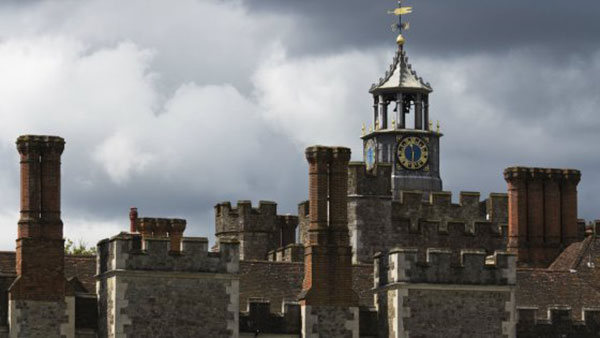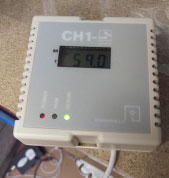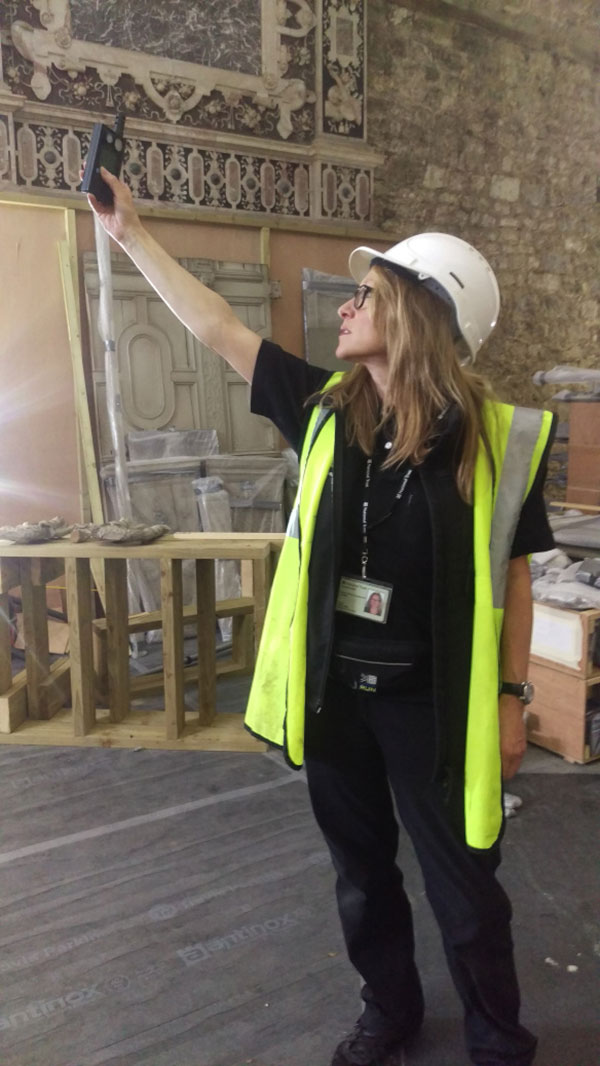From 2011 to 2013, Royal Oak supporters raised $1.25 million to support the conservation of Knole’s ballroom and its contents. Knole is one of the Trust’s most spectacular properties – it’s a sprawling estate with hundreds of rooms, its own deer park and a profound history tied to some of England’s most important cultural figures. We are proud to help protect such a special place forever, for everyone.
The preservation work at Knole is ongoing, and the hardworking team at its conservation studio is maintaining a fascinating blog about their progress.
By the Knole Conservation Studio
One of the most important elements of conservation is making sure that our collection has the best possible environment to live in. In a house like Knole this is very difficult. It’s a large building with no heating or other environmental control. This means that the house can be at the mercy of the elements. Humidity and temperature rise and fall with the weather with no way for us to control it.
As part of the conservation project at Knole we will be having special conservation heating installed in the showrooms here. Sadly for our visitors and volunteers this does not necessarily mean that the house will be toasty and warm in winter! The heating will purely be there to control the RH (Relative Humidity) of the rooms. Relative humidity is one of the biggest problems we face here at Knole. When it is too high it causes condensation to build up on vulnerable surfaces, attracts dust and makes a perfect home for mould. It can also create perfect conditions for all sorts of pests such as woodworm and deathwatch beetle. When it is too low it can cause some materials to contract and crack, veneers to lift and glues to fail.
Because of the importance of RH and temperature we have to keep a very careful eye on conditions in the showrooms. If there are particular anomalies such as high RH where it is usually lower we can investigate what has happened. Perhaps there is a leak or a heater has failed. Although we don’t yet have control over the showroom temp/RH we have been able to have some control in some behind the scenes areas at Knole. We have special humidistats in special stores that will react to the Rh in a room and turn on heaters when necessary.
The primary method we use to monitor RH is our Hanwell environmental monitoring system. If you visit Knole you may see the sensors dotted around the galleries.

Here you can see the Painting Store monitor. It has an LCD display showing you the RH and temperature at the time.
Each room has a box and each box is equipped with a transmitter that relays the information it’s gathering to a computer in the office. This then plots a graph that allows us to see trends and patterns in individual spaces.
Within the National Trust we try to aim for an RH level of 40-60%. This represents the amount of water vapour present in air as a percentage of the amount needed for saturation at the same temperature. Because National Trust collections are often so varied and in historic settings there is no perfect RH that is ideal for all materials but this range gives us the best chance.
To make sure we have the most accurate readings possible we also take spot readings on a regular basis. This involves taking a handheld RH/temp monitor into each space and taking an extra reading. This is a good way to make sure we are obtaining accurate information. This is also our primary method of keeping an eye on RH/temp in the part of the house currently undergoing conservation work ready to be opened again next year.
Knole suffers with frequent high RH which will be addressed when we have our new conservation heating. Until then we do what we can!







